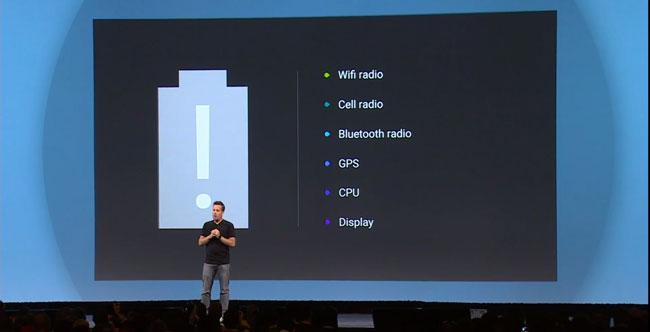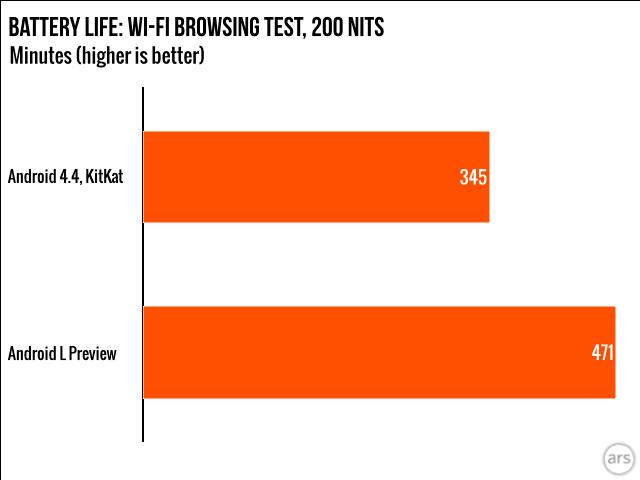Android
Android L propose interesting changes from the current available version, Android 4.4 KitKat. While it was recognized for its optimization in the face of smartphones and tablets with 512 MB of RAM – Svelte Project – the new version will come with an outstanding interface change, but also a token improvements level software. This time Google has focused on Volta Project, oriented to the optimization of energy consumption class = “size-full wp AlignCenter-image-239407″ Technology, one of the major issues and concerns quintessential users. 
Greater autonomy, the goal of Google
The search engine so we did know at the Google I / O, event presentation which announced Android L, among other innovations . There, responsible for developing the new version of Android Android specified that L is specifically compiled with a view to significantly reduce energy , or what is the same, prolong the life of the devices compatible.
Although the theoretical data presentation offered, now Ars Technica has conducted a test of independence with an Android Nexus 5 L. The truth is that is just a test that measures the time Using screen WiFi web browsing, but the results obtained are at least a first demonstration that Google is on the right track.  Initial
Initial
First results
And the accompanying graph provides no doubt. The Android Nexus 5 L offers better runtimes than the Nexus with Android 4.4 5 KitKat. In particular we can see how the former manages the battery support Web browsing over WiFi 471 minutes . In contrast we have the Nexus 5 with KitKat, which offers a range of 345 minutes under the same test. Therefore, the difference is more than noticeable since we are talking over 120 minutes.
We should note that the site has taken the test a system that forces the terminal to refresh a web page every 15 seconds a brightness level of intensity equivalent to 200 nits screen. Also qualify that suppressed the power saving mode, that it is automatically applied to reach 15% of the battery charge.Concluding
In conclusion, we can say that Android L points to a great value in the field of autonomy. However, we note that the currently available version of this update corresponds to a test version. It is also interesting to note that to maximize Google’s proposed energy savings will require that apps are also optimized to take advantage of this new technology. Therefore, we consider these data as a first approximation to the final tests, those that can be performed well when Google releases the final version of Android L, scheduled for the upcoming fall season.
RSS ![]()
No comments:
Post a Comment